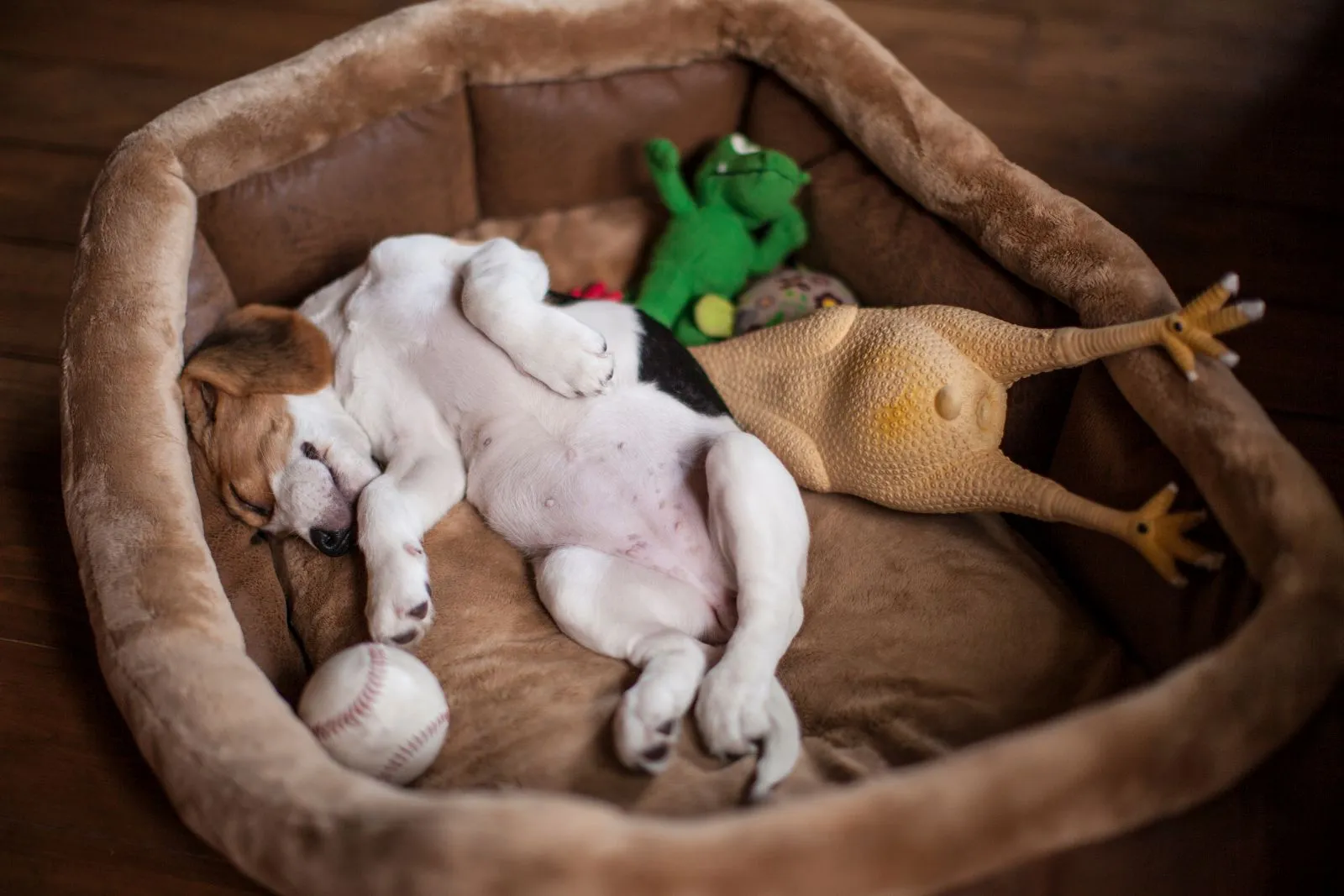The question remains of what our dogs dream of. Their nocturnal experiences are probably based on what they know from their day-to-day life. For instance, an English Pointer may dream of chasing a hare or pheasant and indicate this by showing its front paw.
A watchdog like the Doberman may scare away intruders from the farm, whilst a companion dog like the French Bulldog might dream of adventures with its owners.
You’ve read it correctly: It’s very much possible that your dog dreams of you! Researchers presume that the close bond between dog and owner leads to them appearing in their four-legged friend’s dreams.
Chihuahuas have different dreams to mastiffs
The size of the dog also seems to play a role in dreams. According to the emeritus psychology professor Stanley Coreen, small dogs like Chihuahuas dream more than larger dogs like the Great Dane. However, dreams last longer with large breeds.
Can a dog have nightmares?
Dogs can have nightmares too. You can gently stroke your dog if you get the feeling that it is dreaming of its last trip to the vet or another unpleasant event.
Why should we let sleeping dogs lie?
Speak to your dog in a low voice and watch to see if it calms down. As previously mentioned, it’s better if you don’t wake your dog, because even a negative experience may, and indeed must, be processed during sleep.

